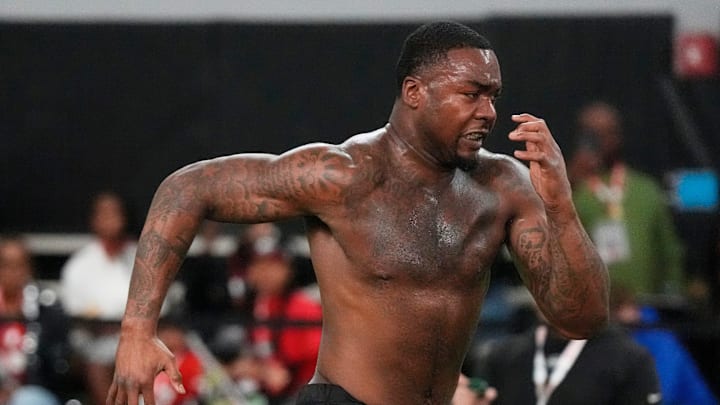In the end, Johannes Hoff Thorup’s second-half changes weren’t enough to compensate for these first-half shortcomings. Ben Lee breaks down Norwich City's 2-1 Championship defeat at Plymouth. Ben is a City season ticket holder and author of the NCFC Analysis social media account, who unpicks games with an analytical report highlighting tactical strengths and weaknesses.
This is what Ben made of a familiar story at Home Park. Plymouth versus Norwich: Defending, Duels, and Decisions Score: 2 – 1 Possession (%): 25 – 75 Passes: 175 – 538 Shots: 8 – 9 xG: 1.75 – 1.

14 Base formations After Thorup’s defensive switch paid dividends against West Brom, the Dane’s side made the long trip to the southwest coast to face Miron Muslic’s Plymouth Argyle. Thorup made two changes to his side, as Marcondes and Nunez replaced Slimane and Sorenson, while City switched back to their 4-3-3 base formation. Plymouth 2-1 Norwich City: Ben Lee tactical analysis (Image: Ben Lee) Many of Norwich’s deep build-up situations saw them replace their patient build-up with a more direct approach, but they continued to set up in their usual 4-3-3.
With Plymouth pressing from their 3-4-3 base, Obafemi (14) stayed tight to McLean (23), while the outside forwards pressed the centre-backs. Plymouth 2-1 Norwich City: Ben Lee tactical analysis (Image: Ben Lee) Early in the first half, with the game still goalless, Plymouth’s wing-backs were ready to press Stacey (3) and Fisher (35) out wide, leaving a 3v3 in the last line. In these situations, the visitors often played directly into the front three.
Plymouth 2-1 Norwich City: Ben Lee tactical analysis (Image: Ben Lee) But when Norwich played out to one side, Plymouth pressed man-to-man against the touchline. On City’s right, for example, the host’s wing-back pressed Stacey (3), while the left centre-back tracked Crnac (17) as he dropped to provide an out-ball. Plymouth 2-1 Norwich City: Ben Lee tactical analysis (Image: Ben Lee) Argyle created a similar situation on the opposite side when they shifted across to trap Norwich against the touchline to prevent a controlled escape on City’s left.
Plymouth 2-1 Norwich City: Ben Lee tactical analysis (Image: Ben Lee) Once Plymouth had taken a two-goal lead, however, the wing-backs dropped back towards the halfway line, staying tight to Norwich’s wingers instead of jumping onto the full-backs. This more passive out-of-possession approach left City’s full-backs free to receive out wide, allowing Thorup’s men to play out with more control. Plymouth 2-1 Norwich City: Ben Lee tactical analysis (Image: Ben Lee) In the first half, when Norwich moved into settled phases of possession, Stacey (3) advanced beyond Crnac (17) on the right, while Fisher (35) inverted from left-back, allowing Marcondes (11) to advance into a five-man last line.
With McLean (23) and Nunez (26) remaining deeper, City created their usual 2-3-5 shape. In response, Plymouth moved between a 5-2-3 mid-block and a 5-4-1 low-block. Plymouth 2-1 Norwich City: Ben Lee tactical analysis (Image: Ben Lee) In their higher 5-2-3 setup, the front line remained alongside Norwich’s midfield three but were ready to press high.
When Nunez (26) received the ball to the side of this initial line of pressure, Crnac (17) often dropped to provide a passing option. With Plymouth’s midfield duo shifting across to the ball side, Marcondes (11) became free to receive in the left half-space. But the last-line 5v5 made it difficult to progress any further.
Plymouth 2-1 Norwich City: Ben Lee tactical analysis (Image: Ben Lee) Despite Norwich completing nice patterns in these higher build-up phases, Plymouth often forced a turnover once City played into their five-man last line, with each attacker occupied. When Crnac (17) dropped outside of Plymouth’s defensive block to receive directly from Duffy (4), for example, he’d often turn to play a fast pass in behind for Stacey (3). But with the right-back tightly occupied, it was relatively easy to intercept the pass.
Plymouth 2-1 Norwich City: Ben Lee tactical analysis (Image: Ben Lee) Indeed, Argyle won 53 percent of ground duels, making it difficult to progress into the final third without putting strain on City’s rest-defence with the hosts transitioning at pace. Nunez (26) was also guilty of attempting a few poorly executed chipped passes over the top of Plymouth’s back line, targeting runners in behind. Plymouth 2-1 Norwich City: Ben Lee tactical analysis (Image: Ben Lee) On one occasion, however, a similar pattern was nearly rewarded, as Norwich created their highest-value chance of the game.
The move began with Nunez (26) chipping the ball over the top for Crnac (17) to chase. After beating the left-centre back in a 1v1, the Croatian advanced into the penalty area and crossed with the outside of his boot to Sargent (9) at the far post, creating a chance worth 0.72xG.
Plymouth 2-1 Norwich City: Ben Lee tactical analysis (Image: Ben Lee) On occasion, to overload Plymouth’s back five, Fisher (35) temporarily advanced into the last line, creating more of a 2-2-6 shape and allowing Sainz (7) to cut inside. Plymouth 2-1 Norwich City: Ben Lee tactical analysis (Image: Ben Lee) Plymouth were even more direct than Norwich in their deepest build-up phases, with the hosts often playing goal-kicks straight into City’s half. But in the host’s higher build-up phases, their 3-4-3 base was clear.
In response, Norwich dropped into an adjusted mid-block, with Marcondes (11) joining Sargent (9) up front, while Crnac (17) and Sainz (7) dropped to create a 4-4-2. Plymouth 2-1 Norwich City: Ben Lee tactical analysis (Image: Ben Lee) Norwich occasionally jumped into a more aggressive mid-press when Plymouth played across to one of their outside centre-backs. When Katic (25) played out to the right centre-back, for example, Sainz (7) jumped to press from the front.
But with Fisher (35) not committing to jumping onto Sorinola (29), the host’s right wing-back was free to receive out wide. Plymouth 2-1 Norwich City: Ben Lee tactical analysis (Image: Ben Lee) In these phases, Plymouth frequently attempted to access the front three running into the space behind Norwich’s back four. They typically did so via chipped passes over the top or progressive ground passes played through spaces between the lines.
Plymouth 2-1 Norwich City: Ben Lee tactical analysis (Image: Ben Lee) Both Plymouth goals, however, came from poor final-third defending from Thorup’s men. In the build-up to the first, for example, Norwich struggled to regain possession and conceded two throw-ins in their own half. After a subsequent clearance, Cordoba (33) played Hardie (9) fractionally onside before the number nine controlled a chipped pass and converted in a 1v1 against the goalkeeper.
Plymouth 2-1 Norwich City: Ben Lee tactical analysis (Image: Ben Lee) In the build-up to the second goal, Stacey (3) gave the ball away after a Norwich throw-in, before the hosts advanced into the penalty area, where Duffy (4) and Fisher (34) both challenged Bundu (15), leaving Hardie (9) free to shoot from 12 yards out. Plymouth 2-1 Norwich City: Ben Lee tactical analysis (Image: Ben Lee) The second-half introductions of Wright (16) and Slimane (20) made a big difference. Wright (16), in particular, provided an extra element of control and transitional security, as Fisher (35) and McLean (23) inverted alongside him from full-back positions, maintaining City’s 2-3-5.
Plymouth 2-1 Norwich City: Ben Lee tactical analysis (Image: Ben Lee) The combination of Wright’s (16) positional and temporal understanding strengthened Norwich’s rest-defence and added important rhythm to their in-possession game. But with City unable to find an equaliser, and with the visitors chasing the game in the final ten minutes, further changes saw Thorup introduce McConville (15), Schwartau (29), and Hernandez (25) in a fruitless switch to a 3-1-6 long-ball approach. Plymouth 2-1 Norwich City: Ben Lee tactical analysis (Image: Ben Lee) Ultimately, given Norwich’s more direct deep build-up play – perhaps intended to limit the hostility of the crowd – and with Plymouth also going long from goal-kicks, Thorup’s men became reliant on aerial duels: only 38pc of which they won.
This was compounded by yet more defensive errors from the visitors in the first half, as well as ground-duel struggles which made it difficult to progress into the final third. In the end, Thorup’s second-half changes weren’t enough to compensate for these first-half shortcomings, and, ahead of a tough test against Sunderland, he has a decision to make: does he refocus on defence with a back five, or double down and hope to outscore The Black Cats? You can read all Ben's previous analysis of Norwich City games via his social media accounts. X: NCFC Analysis Web: NCFC Analysis.
Sports

Ben Lee: Tactical analysis of Pilgrims defeat

Ben Lee analyses a 2-1 Canaries Championship defeat at Plymouth.















